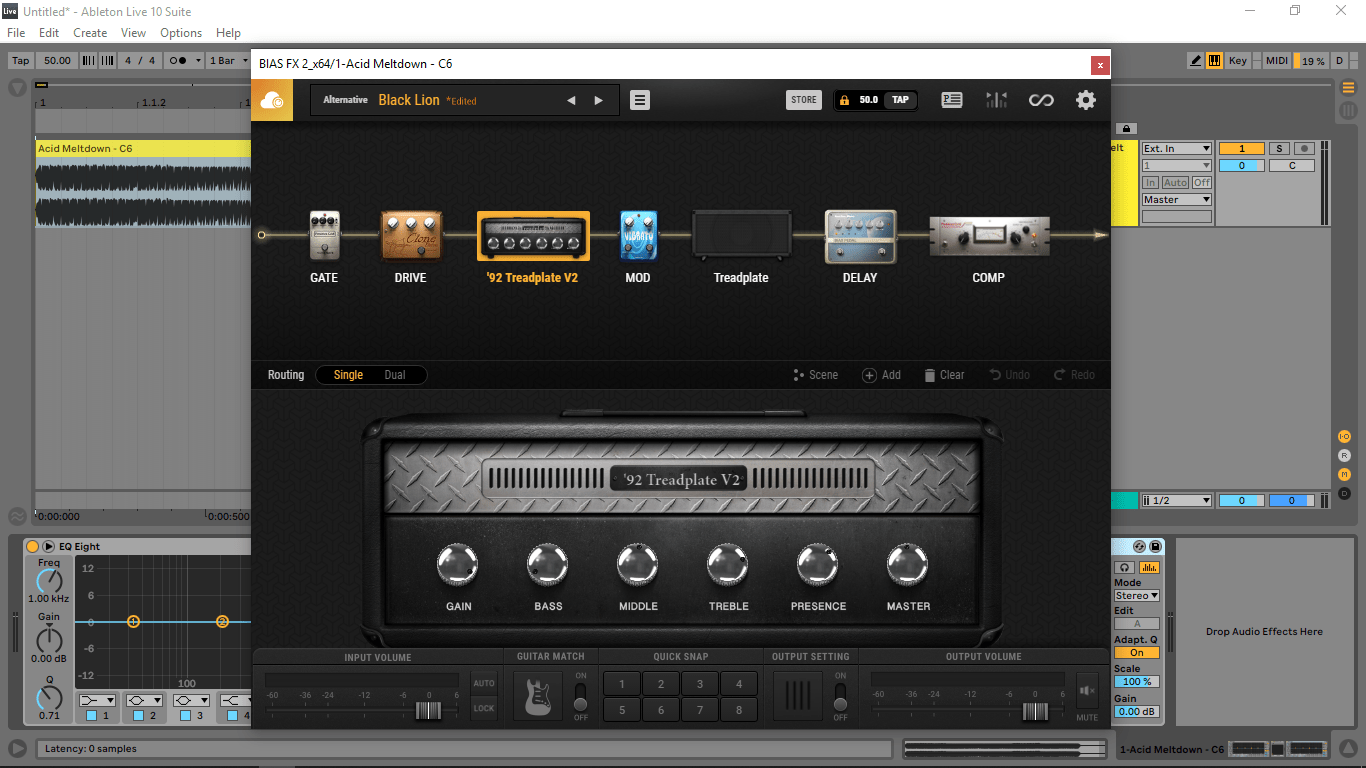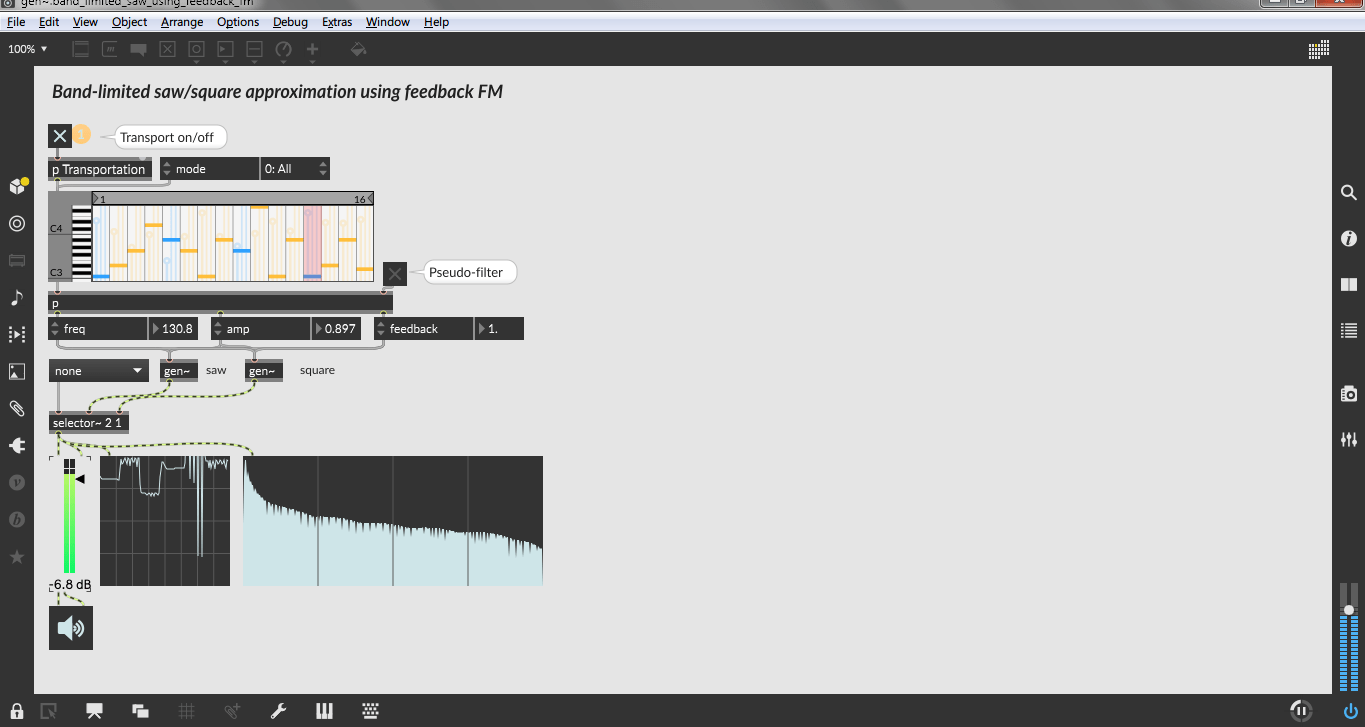Cycling 74 Max 8 System Requirements

- Cycling 74 Max For Cats
- Cycling 74 Max
- Cycling 74 Max 8 System Requirements Pdf
- Cycling 74 Max 8 System Requirements Free
- Cycling 74 Max 8 System Requirements Download
With MC, objects and patch cords contain multiple audio channels. MC will transform how you imagine sound design, effects processing, and mixing. It might be the closest thing to a mind-expanding drug Max has ever had.
Cycling ’74 creates software for the specialized needs of artists, educators, and researchers working with audio, visual media, and physical computing. Shareware Junction periodically updates pricing and software information of Max v.7.2.4.2 full version from the publisher using pad file and submit from users. Software piracy is theft, Using crack, password, serial numbers, registration codes, key generators, cd key, hacks is illegal and prevent future development of Max v.7.2.4.2 Edition. Since we began, Cycling ‘74 has been dedicated to removing limits with Max. Today Max is used all over the world in museums, music studios, galleries, universities, art schools, stages, research labs, and anywhere the limits of technology and creativity are being tested.
MC builds on how you already work with Max.
Simply type mc. before the name of any MSP object
Connect MC objects with multi-channel patch cords
Mix to any number of audio outputs
With MC, patches with 100 channels of audio look as simple as those with a single channel. The ability to manipulate so many audio channels and operations with so few objects will open up a previously hidden world of ideas.
Explore controlling complex soundscapes with MC
With MC, you can easily apply controls across a space of audio channels.
120 oscillators
60 delays
4 Max for Live devices
Everything you love about Max.. multiplied
Edit multiple Gen instances simultaneously
Multi-channel signal probe with selectable visualization modes
Build polyphonic synths by assigning MIDI and MPE to individual channel streams
Layer evolving sounds with multiple automation curves
For Max 8, we profiled real-world, messy patches to discover what we could optimize. You'll notice the difference the moment you launch the application.
Up to
faster launch
Max 8 launches between 2x (Mac) and 20x faster (Windows)
Up to
patch loading
Large patches will load up to 4x faster
Now
more responsive
Complex UI operations are significantly more responsive
In addition to these overall improvements, we've significantly enhanced specific real-time use cases including the coll object (up to 60x faster), Jitter texture to matrix copying, jit.world matrix output, and an updated physics engine.
Max 8 includes a Mappings feature inspired by DAWs such as Ableton Live.
Assign physical controls to your patch in just three steps:
1Enter Mappings Mode
2Select a slider
3Move your controller
Once you've mapped your controller, you can immediately starting playing as you patch.
With Mappings in Max, use a familiar workflow to set up hardware controls for more than just volume or filter cutoff. Trigger complex events, transform visuals, or adjust probabilities — all without adding any objects to your existing patches.
Vizzie is our collection of over 80 high-level modules for interactive video. It's already a perfect launchpad for learning Jitter, but now it's ready for serious use.
Vizzie is now powered by OpenGL for dramatic improvements in performance and flexibility.
Expand beyond 2D by mixing Vizzie modules with OpenGL Jitter features.
Use NodeJS to build custom servers or run small applications directly from your Max patch. With support for the vast NPM library, Node for Max connects your patches to thousands of possibilities.
Launch Node applications from within your Max patch, then control and interact with them.
Max 8 offers a more fluid and optimized patching experience. You'll notice numerous thoughtful refinements in addition to increased responsiveness. A few highlights:
Move objects into and out of patch cords in one step
Manage objects in groups
Filter and timestamp events with a redesigned Max console
Gain immediate insight on your patch with event probing
Choose a color theme to customize the Max interface
Use Operate While Unlocked to move seamlessly between editing and playing
Using Max doesn't need to be about knowing or remembering every detail.
Start typing into the new Search Sidebar to immediately access the thousands of Max examples and tutorials that ship with Max, along with results from web forums and in-depth articles.
You might be surprised what you discover.
1Javascript, coll, and other text-based objects can open files in an external text editor
2The Max console toolbar icon shows when new messages or errors have arrived

3Post messages to the Max console from any patch cord in one step with new Print Watchpoints.
4Max 8 includes a completely new UI for editing object colors including algorithmic color tweaking, palette saving and loading, and much more.
5Use the mouse or trackpad to zoom and scroll around in large patchers
6The patcher style system features numerous refinements including the ability to delete styles
7There are new options for pasting objects including Paste and Match Style
8The audio signal probe includes new history and scope modes
9Updated interfaces for Reference, Package Manager, File Browser, and Authorization Window features
10The feature that transforms changed attributes into arguments has been improved, particularly for Jitter objects
11The new chooser UI object displays a scrolling list, useful for file browsing interfaces and more
12The new multirange object is a graphical editor for functions that contain ranges of values
13The new console object outputs and filters the contents of the Max console inside your patch
14New MIDI objects for 14-bit continuous controller, registered and non-registered parameter messages
15Gen now has an event domain version called gen with the same interactive code generation and DSP features as its older sibling gen~
16New frame~ and framesnap~ objects simplify working with spectral data
17Max scans your audio plug-ins, simplifying the use of 'shell' plug-ins (such as from Waves and Expert Sleepers). It also will also detect plug-ins with compatibility issues and disable them.
18Max 8 is compatible with modern Mac OS full screen windowing features including tabbed windows Craps lay odds.
19Max 8 on Windows includes support for multitouch and HiDPI monitors
20Improved support for multi-channel audio file formats
21Duplicate file name warnings list the locations of all duplicate files, not just the one Max will be using.
22Improvements to the jit.gl.pix WebGL export process
23OpenGL supports drawing to multiple jit.gl.node contexts, simplifying render variations from a single geometry source.
24jit.gl.multiple can now draw jit.gl.node instances, allowing for complex geometry hierarchies to be multiplied
25jit.gl.model now loads FBX, glTF and OpenGEX files
26Improvements to the way Jitter GL objects automatically find and join a render context without specifying a rendering context name
27jit.gl.node and jit.world can output a description of the entire 3D scene as a dictionary
28jit.gl.slab and jit.gl.shader without arguments will open a default shader file when double clicked as a starting point for developing new shaders
29The vst~ object now supports VST3 plug-ins
30The line object works with multi-segment ramps and is compatible with the function object
31The dial object includes four new modes: Live, Classic, Needle and Pan and the live.dial object has a new large mode
32The jit.cellblock object can monitor audio signals
33The poly~ object can host a different patcher in each of its voices and includes a bypass mode
34poly~ automatically adds an outlet identifying the voice that sent the last event
35Gen includes an @expr mode for high-performance expression evaluation in a single object box
36The message box allows changing the value of its arguments without triggering output Jpegmini 1 8 2.
37The gestalt object that reports system environment information has been substantially modernized and includes a dictionary output mode
| Private | |
| Industry | Computer software |
|---|---|
| Founded | 1997; 23 years ago |
| Founder | David Zicarelli |
| Headquarters | San Francisco, California , |
Area served | Worldwide |
| 22 | |
| Parent | Ableton |
| Subsidiaries | c74 Music |
| Website | www.cycling74.com |
Cycling 74 Max For Cats
Cycling '74 (also known as 'C74' and stylized as '74) is an Americansoftware development company founded in 1997 by David Zicarelli, headquartered in San Francisco, California and owned by Ableton. The company is best known for their work with the digital signal processingsoftware environment, Max.
History[edit]
Cycling '74 (C74) was founded in 1997 by David Zicarelli to serve as the distributor for his various collections of software.[1] The company's official website states that 'the name Cycling '74 comes from a 1974 bicycle catalog from which some of the images that decorated our original site were inspired'. The Wayback Machine provides an archive of the website (from December 1998) here.
C74 began producing the MSP extension to Opcode Systems's 1990 program 'Max' in the mid 1990s, and in 1998 started distributing both products together.[2] There is no longer a version of Max without audio processing, so the two environments are now technically inseparable.[3]
In June 2017, Ableton announced they had acquired Cycling '74.[4][5]
Products[edit]
Cycling 74 Max

Max[edit]
C74 is perhaps best known as the distributor and current developer of the Max/MSP digital signal processing environment. The company has published the program since 1999,[6] and in 2008 released a major overhaul of the package (released as Max 5). A major Sound on Sound article (August 2008) focused mainly on the new GUI of the software.[3] The new interface was designed using the Juce package. Aside from re-designed graphics, the development of the new system concentrated on the original code base, and has provided integrated documentation and debugging. From the release of Max 5, MSP and Jitter were included in the one package.
MSP[edit]
MSP is a DSPplug-in for Max, allowing realtime audio synthesis.
Jitter[edit]
Jitter is a plug-in for Max that allows realtime manipulation of 3D graphics and video first released in 2003.
Pluggo[edit]
Cycling 74 Max 8 System Requirements Pdf
Pluggo was an extension to Max that provided capabilities for VST design. Pluggo was required to export Max 'patches' for use in digital audio workstation (DAW) host environments, but has been discontinued[7] since Max 5.
Cycling 74 Max 8 System Requirements Free
Max for Live[edit]
Max integration into Ableton Live, developed by Ableton and Cycling ’74, to build unique synths and effects, create algorithmic composition tools, or fuse Live and controller hardware into new music machines. Unlike Pluggo, you can edit the device created with Max for Live directly from Live by pressing the edit[8] button.
Record Label[edit]
Founded in 2000, c74 Music was created to release music produced using Cycling '74 technology. The same year, the label released its first record - a live compilation album by the Freight Elevator Quartet.[9] The current artist roster is:
- DR.OX
- Amoebazoid
- Gregory Taylor
- Crater
- Leslie Stuck
- William Kleinsasser
- Tetsu Inoue and Carl Stone
- The Freight Elevator Quartet
Cycling 74 Max 8 System Requirements Download
References[edit]
- ^Battino, David; Richards, Kelli (2005). The Art of Digital Music. Backbeat Books. p. 110. ISBN0-87930-830-3.
- ^http://www.cycling74.com/twiki/bin/view/FAQs/MaxMSPHistory#Where_did_Max_MSP_come_from Max/MSP FAQ Archived May 11, 2008, at the Wayback Machine
- ^ abSound on Sound Magazine, August 2008: 'Cycling 74 Max 5 - Graphical Programming Environment For Audio & MIDI'
- ^Wilson, Scott (2017-06-06). 'Ableton acquires Max for Live developer Cycling '74'. Fact. London, UK: The Vinyl Factory. Retrieved 2017-06-13.
- ^'Cycling '74 + Ableton'. cycling74.com. Retrieved 2017-06-06.
- ^Cycling '74 || About Us
- ^http://cycling74.com/2009/05/14/pluggo-technology-moves-to-max-for-live/
- ^http://cycling74.com/2009/01/15/my-perspective-on-integrating-max-and-live/
- ^http://www.cycling74.com/c74music C74 Music

Cycling 74 Max 8 System Requirements
UNDER MAINTENANCE